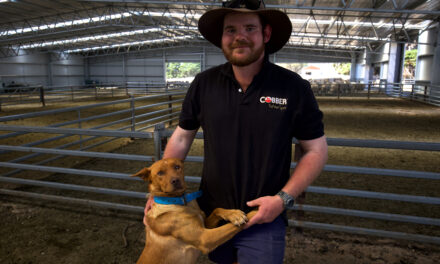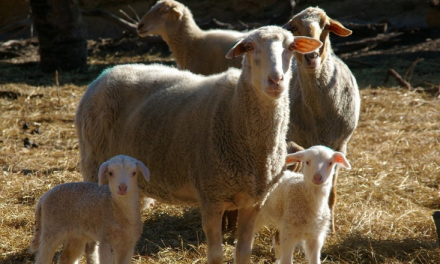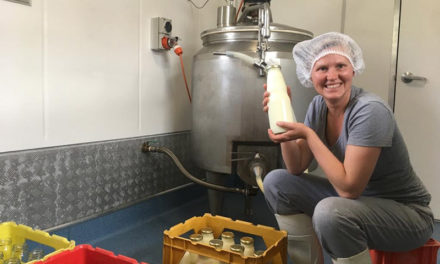Australian beef and sheepmeat prices are set to remain strong in 2020, as African Swine Fever continues to grip the global animal protein sector and pull down overall sectoral growth, according to Rabobank’s just-released Global Animal Protein Outlook 2020.
Bringing uncertainty to all markets, however, African Swine Fever (ASF) offers opportunities for some, the report says, with Australia standing to benefit from the limited global protein supplies.
The bank’s flagship annual global outlook for the animal proteins sector, titled Seeking Opportunities in an Uncertain World, said while production growth is expected in most regions in 2020, “the impact of ASF in Asia overwhelms the outlook”, as China’s production losses exceed the growth in all other regions combined.
Chinese pork production is expected to decline by a further 10 to 15 per cent from 2019 levels and, while less than the decline in 2019, the report saids, it will ensure 2020 production is well below the 2014-18 average prior to the major ASF outbreak.
Pulling down overall growth, the report says, ASF also brings uncertainty to the outlook alongside trade disputes, sustainability developments and the ongoing rise of alternative proteins.
Australia
For Australia, Rabobank senior animal proteins analyst Angus Gidley-Baird says while global demand will keep local beef and sheepmeat prices strong, any further upside will be driven by an improvement in seasonal conditions as producers come back into the market to restock.
“There is considerable upside potential for prices, given livestock inventories for both sheep and cattle are at their lowest levels in over 20 years,” he said.
“And it is this low stock availability that will see the market remain highly sensitive to substantial rain events.”
Mr Gidley-Baird said while seasonal conditions remain dry, prices are less likely to experience any large downside, as there is “simply not the volume of stock in the market to drive any big crash in prices”.
For beef, slaughter rates and production are forecast to be lower in 2020, following high female slaughter in 2019 which heavily reduced breeding cow numbers, he said.
“Lower inventory numbers and strong global markets will support prices for heavy-finished cattle, in particular,” he said.
“While lighter classes of cattle will remain more exposed to seasonal variability.
“That said, the price spread between heavy and light cattle will narrow as soon as it rains, with lighter cattle set to achieve the biggest gains in price.”
In the sheep market, Mr Gidley-Baird says continuing dry conditions through many sheep-producing areas in 2019 have limited the ability for widespread restocking, with lamb production expected to remain steady in 2020. That said, an improvement in seasonal conditions could lift production, he said.
“Strong export markets – principally the US – will support lamb prices,” he said.
“But any upward price movement as a result of low numbers is likely to test margins unless we start to see increases in US lamb import prices.”
Mr Gidley-Baird said while strong beef and sheepmeat prices have been a “godsend” during the drought, the inability for many producers to fully capitalise on the higher prices has been frustrating.
“In this environment of really strong global demand, we have seen, for example, US beef import prices hit record levels at over $8/kg for lean trimmings, but there is simply not the product to send over to take advantage of these high prices.”
Global Outlook – uncertainty
The report said while total animal protein production growth (across both land and aquatic species) will be positive for the key regions – the ASEAN-5 nations, Brazil, China, the European Union, North America and Oceania – in 2020, it is after a year of strong decline in 2019.
Poultry and aquaculture will lead production growth, it said, while beef will be stable and wild-catch seafood will decline again.
But “all of these changes are minor compared with the production decline in pork”, the report said.
“The drop in pork production is driving a hole in the global protein space that simply cannot be met,” Mr Gidley-Baird said
“This is despite increases in production particularly out of North America and Brazil.”
The report warns ASF is likely to spread to new countries in 2020, due to frequent shipments of feed and live animals – as well as the movement of people and equipment – across borders, but said “we do not expect new countries to experience the same level of impact as China and Vietnam”.
As such, the herd loss caused by ASF in 2020 is expected to be lower than in 2019, as recovery extends well into the 2020s, it said.
Mr Gidley-Baird said while ASF is set to bring uncertainty to all markets, there is also uncertainty stemming from trade disputes and issues, the ongoing rise of alternative proteins and sustainability developments.
“Not only will the US-China trade war have a bearing on trade, there is also uncertainty resulting from Brexit – with the UK the EU’s largest importer of all proteins – and the ongoing delays to the United States-Mexico-Canada Agreement (USMCA),” he said.
“While some of these trade uncertainties will have a bearing on currency rates and transaction costs, they may also result in trade bans or blockages.”
On the alternative proteins front, Mr Gidley-Baird said, meat alternatives are not yet stealing growth from conventional meat but rather, “adding to the overall protein pie”.
“We don’t see any great loss in conventional beef consumption despite the growing demand for alternative proteins,” he said.
“Instead we see alternatives representing additional or incremental growth in consumption.”
In Australia, the volume of alternative proteins remains very low, he said, while in the US, consumers are eating more conventional beef, chicken and pork as their consumption of all proteins is growing.
The report says the issue of sustainability and sustainable development will also shape the growth of animal production and consumption through the 2020s.
And provide opportunities for the sector to “win on sustainability” by harnessing the supply chain and moving ahead of market signals.








